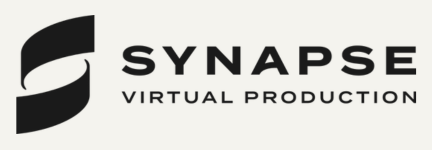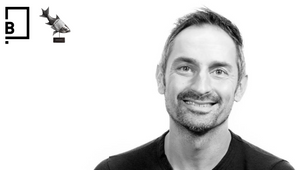
“Tell Stories Like the Ramones, Craft Like Van Halen”: Inside a Cannes Juror’s Design Philosophy

As Cannes Lions 2025 approaches vigorously, category entrants are sure to have the same question running through their minds – what are jurors really looking for?
Speaking with Bruno Regalo, chief design officer at TBWA\Worldwide, who is sitting on this year's Design jury, we got some insight into what adjudicators may be looking out for.
Beyond Design
If Bruno is certain of one thing, it’s that design must do more than look good. “I’ll be seeking work that feels truly fresh and unexpected, that dares to disrupt in order to build deeper, more meaningful connections between people and brands,” he explains. “It’s about creating relevance that goes far beyond aesthetics.”
The emphasis on disruption, for Bruno, isn’t novelty; it involves a conscious break from overused tropes and a move toward design that is bold, original, and culturally attuned.
In fact, it’s the reason he founded the network’s global design studio. “One of the core pillars of the Design by Disruption methodology is the hunt for conventions – identifying the expected, the overused, and the familiar patterns within a category – and breaking them,” says Bruno.
Cultural Sense-Checking
Cultural sensitivity is absolutely critical to the process of judging. After all, with juries made up of global voices, understanding context is as much a necessity as it is a challenge. “Diversity doesn’t just ensure fairness; it unlocks richer, more resonant interpretations of what great design can mean in different parts of the world,” says Bruno.
For jurors, dismantling their own biases is part of the job. “Bringing together individuals with distinct backgrounds, perspectives, and cultural contexts allows us to break away from the usual lenses through which we view design.”
A Balancing Act
Another layer of complexity lies in balancing the respect for design fundamentals with that insatiable hunger for innovation. Work that leans too heavily on either side risks falling short. "Innovation for the sake of innovation often turns into a showcase of clever tricks – impressive, but ultimately hollow," Bruno warns. "On the other hand, relying solely on traditional design principles can result in work that feels cold, technical, or purely aesthetic."
What bridges that gap, says Bruno, is the core idea. “When the idea is powerful, it naturally brings with it the right measure of both worlds – innovation and tradition – through conscious, intentional, and distinctive choices.” For Bruno, the strong conceptual foundation is what allows execution to be purposeful and not performative.
Consciousness
As environmental impact becomes more central to the conversation around brand behaviour, sustainability is also climbing the judging agenda. “Today, there is no excellence without consciousness,” he emphasises.
To this end, Bruno believes a design that ignores its environmental footprint is incomplete. Entries are now expected to demonstrate “a clear cycle of intelligence – from materials and production to disposal and how it integrates into people’s lives”.
Emotion
Beyond aesthetics and functionality, emotional resonance, too, is a non-negotiable for Bruno. “Aesthetics may catch the eye. Function may serve a purpose. But it’s emotion that lingers.
“A design piece that forges a genuine emotional connection with its audience transcends form – it becomes part of people’s lives.” In a festival that celebrates what really matters in creativity and design, emotional impact just might be a deciding factor.
Bruno also notes that at some point in their careers, every creative seeks a form of visual perfection, admitting he was no exception. “But today, my pursuit has shifted toward a perfection of purpose.”
It’s an evolution that mirrors the changing role of design itself. “It’s no longer just a beautiful frame; it has become a catalyst for change, an immediate connector between people and brands, a reflection of time and context – a visual manifesto,” he says.
For those wondering what might hit or miss, Bruno will look kindly on work that avoids over-explaining what should be self-evident. “Design that needs a manual loses its power. And style without substance doesn’t go far.”
Or, in the words of a friend, Bruno quotes, "Tell stories like the Ramones, craft details like Van Halen."















